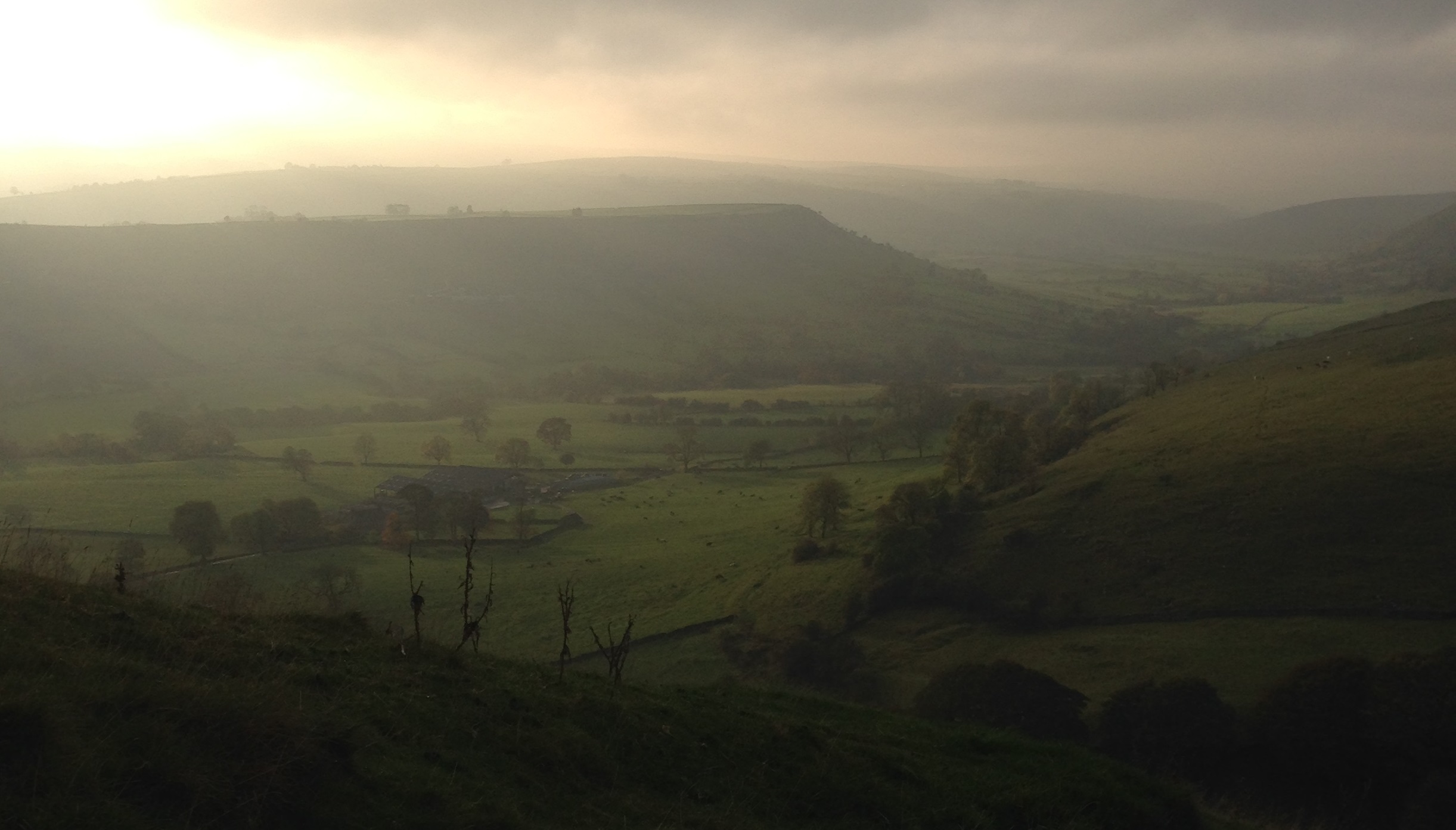
November 10, 2015, by Hannah O'Regan
Hidden history – cave archaeology (part 1)
The last two weeks have been quite busy in terms of cave archaeology. On Wednesday Oct 28th I went for a brief expedition to Fox Hole Cave in Derbyshire led by Paul Mortimer from the National Trust. The archaeology from this site (excavated in 1928 and again in the 1960s-80s), includes the earliest evidence of people in the Peak District, from before the end of the last ice age. Fox Hole itself comprises a long thin passage that divides into two, each ending in a small chamber, one of which was named ‘bear chamber’ after the many ursine fossils that were found there. We didn’t find any bears, but we did see some vole and frog/toad bones that form a ‘frog earth’ between the boulders in the main cave (I might write about frog earths on another occasion). Finds from Foxhole are on display at Buxton Museum and Art Gallery – see their blog for a full account of the trip. We exited the cave, somewhat muddy and very pleased with ourselves to discover the sun had broken through the cloud and we had a glorious view of the upper Dove Valley. Bones and beauty, it’s hard to get a better day than that!
Continuing the cave theme, Saturday Oct 31st was the 26th British Cave Research Association (BCRA) Cave Science conference at Manchester Museum. We heard about research on topics from maze caves in the Pennines to water quality in Mexican cenotes, and the final session was devoted to cave archaeology in the UK and Europe. Sites discussed included Sculptor’s cave and Covesea 1 and 2 in Scotland, where people were definitely buried, and possibly beheaded, and an overview of Neolithic cave sites in the Balkans, which were used for all sorts of purposes including storage, burials and pastoralism (more info here). Finally, Saturday and Sunday (Nov 7 and 8th) saw the 36th Association for Environmental Archaeology conference in York, with a session of cave archaeology on Saturday morning. I presented our collaborative work on Doghole Cave, a Romano-British burial site in Cumbria, which we excavated for four weeks in 2010 and 2011. The most surprising discovery at Doghole was the partial horse skeleton at the bottom of the site – it must have been very difficult to manoeuvre a dead (or live) horse down a shaft and into a cave some 15m below ground level.
Cave archaeology is a somewhat different beast to standard outdoor excavations, it’s dark, often muddy and hard hats are essential. In some regions of the UK, soils don’t preserve bones, but inside caves (which are often in limestone areas), they survive and can tell us lots about the animals that once lived in the local area. A good example of this was the work by Ian Smith and colleagues who identified elk (moose) and horse from Kent’s Bank Cave in Cumbria. The small assemblage of bones from this site also produced lynx, bear and dolphin as well as the earliest postglacial human remains in the north of England.
So, caves, they have a lot to offer. Often it’s recently dead sheep and mud, but just occasionally, there’s something odd to be investigated…
If you’re interested in cave archaeology for an MA/MSc or PhD, please feel free to e-mail or tweet me:
Hannah.oregan@nottingham.ac.uk or @palaeohan
No comments yet, fill out a comment to be the first

Leave a Reply